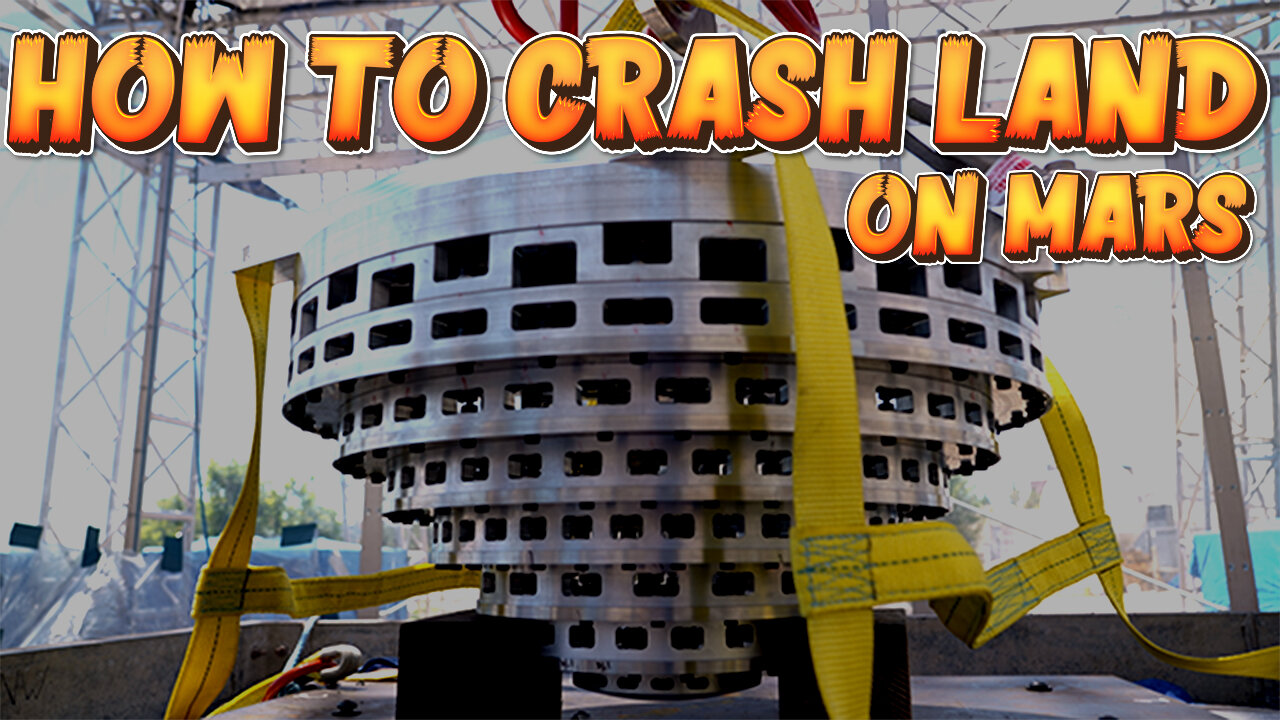Premium Only Content

NASA Tests Ways to Crash Land on Mars
As of my last update in September 2021, NASA has not conducted tests specifically aimed at intentionally crash-landing on Mars. Such an endeavor could offer valuable insights for scientific research and technology development. Here are the key aspects to consider in such testing:
Scientific Objectives: A crash landing on Mars could serve scientific goals, like studying impact effects, subsurface materials, and potential habitats. Mission planning would determine impact sites and necessary instruments.
Crash Dynamics: Engineers would design the spacecraft to handle impact dynamics—velocity, angle, and energy absorption. Ensuring safety for ongoing missions and the Martian environment is paramount.
Instrumentation: The spacecraft would house scientific instruments to capture data before, during, and after impact, such as cameras, spectrometers, and seismometers.
Safety Measures: Minimizing hazards and preventing adverse effects on Mars' environment and active missions is crucial.
Technology Validation: Controlled crash tests could validate landing technologies—impact-resistant gear, energy-absorbing materials—for future missions.
Communication Systems: The spacecraft would need robust communication systems to relay data back to Earth even post-impact.
Legal and Ethical Compliance: Conforming to international space treaties and ethical standards is essential for responsible exploration.
Keep in mind that developments may have occurred since September 2021. For the latest updates, refer to NASA's official sources.
-
 4:01:18
4:01:18
Alex Zedra
11 hours agoLIVE! Playing Verdansk all night
79.6K5 -
 LIVE
LIVE
Father Russell
2 hours agoJust Gameplay Day | Chill and Kill
311 watching -
 4:09:39
4:09:39
I_Came_With_Fire_Podcast
19 hours agoTARIFF TAKEOVER | REDCOATS 2.0 | DOGE FINDS SOMETHING HORRIBLE
50.6K16 -
 LIVE
LIVE
Dorian_D
12 hours ago🔥🔥 Hades PS5 Blind Playthrough LIVE! 🔥🔥
116 watching -
 8:00:00
8:00:00
SpartakusLIVE
1 day agoThe MACHINE is back after a RESTFUL 4 hours of sleep
175K8 -
 6:10:55
6:10:55
Eternal_Spartan
11 hours agoLive at 9pm Central! Come Hang Out w/ a USMC Vet Playing HALO! Can't Wait to See Everyone!!
62.1K3 -
 5:09:12
5:09:12
EzekielMaxwellVT
14 hours agoVTuber/VRumbler - Vampire The Masquerade - Listening to the voices in Jo's head
37.6K -
 6:48:45
6:48:45
Welsh Girl
13 hours ago🔴 Minecraft - Finding the Ender Dragon - DAY 7
56.4K4 -
 4:00:33
4:00:33
SynthTrax & DJ Cheezus Livestreams
1 day agoFriday Night Synthwave 80s 90s Electronica and more DJ MIX Livestream Trip-Hop SPECIAL EDITION
80.9K1 -
 4:03:27
4:03:27
FusedAegisTV
17 hours agoRumble Smackdown! #001 Street Fighter 6 $500 Online Tournament
114K9